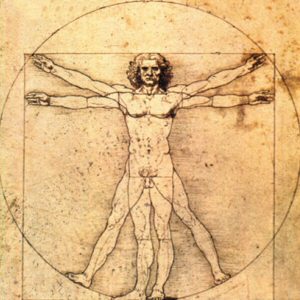Who Is Leonardo da Vinci
About The Renaissance Genius Works

For many, Leonardo da Vinci was a man so to speak perfect, the very prototype of the Renaissance artist. He is proud looking, very athletic and particularly skilled in handling weapons. Leonardo also has a great intelligence and is very interested in the secrets of nature: animals, plants, birds, natural phenomena and astronomy ... His slender and well proportioned body paired with his angel face and his blue eyes gives him a charm and beauty that according to Giorgio Vasari - contemporary painter of Leonardo da Vinci and also author of the first biography of the artists of the Italian Renaissance - will never be sufficiently praised.

A childhood in Tuscany
Born April 15, 1452 in the small Italian town of Vinci, Leonardo grew up in the enchanting and picturesque landscapes of Tuscany. His family has a small typical Tuscan country house as well as a mill and land where young Leonardo develops an insatiable passion for everything related to Mother Nature. He spends countless hours walking around and observes natural phenomena with great attention and with a sense of detail unique to his genius. He notes all his reflections in notebooks that he accompanies with extremely detailed drawings ; these would later form what is known today as the famous Codex of Leonardo da Vinci. He also paints striking portraits of horses, dragons and ermines.
Leonardo da Vinci is repelled by the theoretical aspect of things and in a very nonconformist way does not spend much time studying locked in a library. For the young engineer, the only way to climb is to experiment, which he will do throughout his entire life. He is content to observe things in order to understand them. Leonardo da Vinci will never receive advanced academic training and will never learn to read Greek and Latin, which is essential for any respectable scientist of the time.
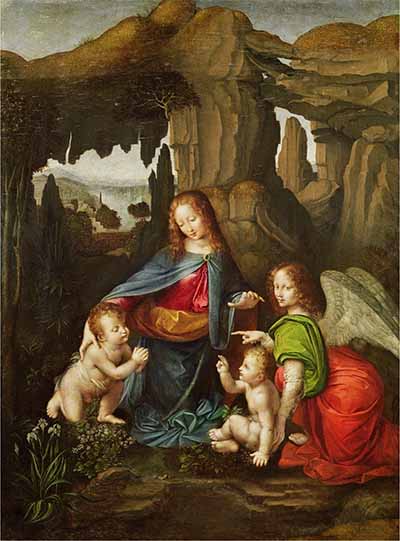
Leonardo da Vinci paintings
Leonardo da Vinci was as much an artist as an engineer. At the age of 17, he left his little homeland of Vinci for Florence to become an apprentice at Verrocchio's art studio, one of the most famous in the city. His first work, the Adoration of the Magi, will remain unfinished as many of his projects. All in all, he is credited with some twenty paintings, the most popular of which are The Virgin of the Rocks and The Mona Lisa, both exhibited at the Louvre Museum in Paris. Among his other popular portraits are also found The Last Supper and The Lady with an Ermine, both painted at the court of Ludovico the Moor.
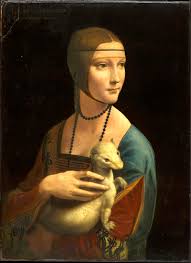
Heart of the party
It may seem surprising today but it seems that Leonardo da Vinci was especially good at being the master of sumptuous feasts organized by the Duke of Milan, Ludovico Sforza. The fabulous scenographic and sound effects of its complex machines animated the biggest court celebrations.
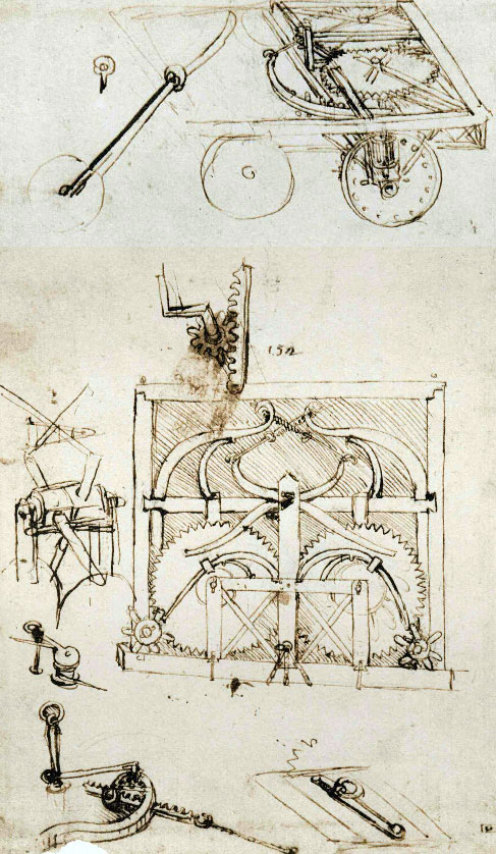
Leonardo da Vinci inventions
In the good graces of Duke Ludovico for his breathtaking shows, Leonardo da Vinci is also the brain in the art of war. At the Duke's services, he designed fortifications, gigantic crossbows, swing bridges and a whole arsenal of weapons and machines to defeat the enemy while minimizing the number of casualties. He is responsible for battle tanks and bombards with explosive projectiles which aim to inflict on the enemy a great fright as well as serious bodily injury and confusion. But the military genius of Leonardo da Vinci does not stop there; a whole fleet of armored ships equipped with cannons, a gigantic catapult very easy to operate, a machine for digging and draining the mud of canals, a helicopter equipped with a large spiral sail ... his imagination probably had no limit. During the 17 years spent at the Sforza court, Leonardo devoted himself mainly to the art of war but also found time to design flying machines and maintain his passion for anatomy and painting.
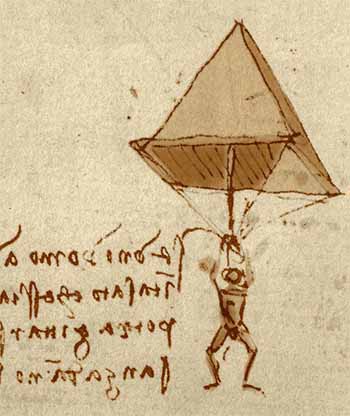
To be able to fly
Very young, Leonardo da Vinci feels a deep need to fly. By observing the flight of birds, he begins to imagine machines allowing man to fly. This is how he draws sketches of single handed manipulated hang-gliders and machines reproducing the fluttering of birds' wings. Ahead of his time, he also draws a parachute and notes that man will be able to jump from any height without damage to his person.
The mystery of the Atlantic Codex
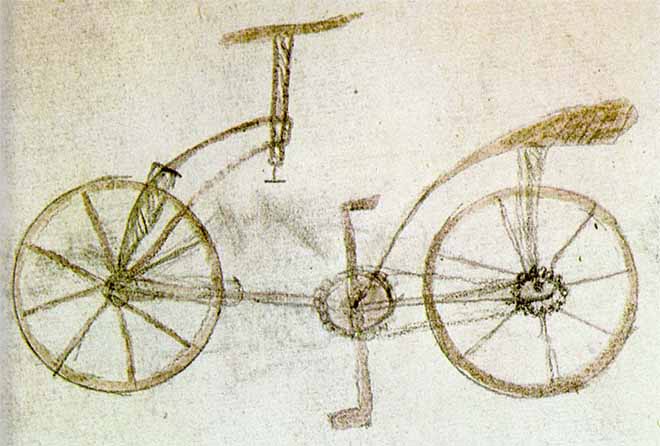
Restored in the monastery of St. Mary of Grottaferrata between 1962 and 1972, the Atlantic Codex contained the sketch of what appears to be a modern bicycle. The drawing is however not as refined as those of Leonardo da Vinci. Why was it hidden and who is the real author? Did Leonardo da Vinci imagine the bicycle several hundred years before its official invention in 1880?
